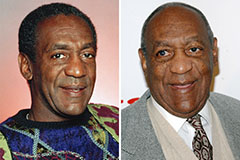
Aesthetic merchandising plays an important role in shaping the shopping experience. By purposefully displaying items, retailers can dramatically influence client habits and increase sales. Efficient aesthetic retailing can change a shop right into a destination, recording attention and encouraging purchases.
Cutting-edge techniques in this area not only enhance the visual charm of a retail room yet also interact brand name identification and tale. Stores that prioritize thoughtful arrangements and effective use of space can create appealing atmospheres that reverberate with clients. The appropriate strategies can boost retail success and foster lasting customer relationships.
Comprehending client psychology and trends is necessary visit here for mastering visual merchandising. By leveraging imagination and data-driven understandings, retailers can apply techniques that maintain their offerings fresh and attractive. Inevitably, welcoming these cutting-edge strategies can lead to a more successful retail operation.
The Fundamentals of Visual Merchandising
Visual retailing is a critical component of retail success, reflecting the calculated discussion of items to improve consumer experience. This area describes the interpretation, relevance, and key elements that make up reliable aesthetic merchandising.
Defining Visual Retailing
Visual merchandising describes the method of creating and organizing retail spaces to make best use of consumer engagement and urge purchases. It incorporates everything from store format and item placement to signs and lights. By focusing on visual appeals and capability, sellers create atmospheres that attract and lead clients.
A visual merchandising firm focuses on these strategies, utilizing techniques to accentuate items. This can include cutting-edge screens that highlight seasonal things or styles appropriate to the local market, such as those in Houston, understood for its one-of-a-kind cultural impacts.
Importance in Retail
The value of aesthetic merchandising in retail can not be overemphasized. It plays a vital function in attracting clients, enhancing brand name identity, and driving sales. Well-executed visual retailing communicates the brand name's message and worths successfully, aiding customers link psychologically with the products.
A tactical strategy can result in raised foot website traffic and greater conversion prices. Retailers that invest in aesthetic merchandising report a visible difference in customer actions, usually causing longer shop brows through and better basket sizes.
Elements of Reliable Visual Merchandising
Effective aesthetic merchandising comprises numerous crucial elements that collaborate to create an engaging purchasing experience. These include:
- Store Format: The setup of aisles, product screens, and checkout locations need to promote very easy navigating.
- Color and Lights: Choices in color palettes and lights can evoke various feelings and highlight specific products.
- Signage: Clear, attractive signage overviews consumers and advertises key messages.
Including these components allows stores to create engaging display screens that reverberate with customers. Utilizing a visual merchandising firm can provide competence on ideal methods, making certain alignment with market patterns, especially in dynamic markets like Houston.
Methods for Innovative Aesthetic Merchandising
Effective visual retailing enhances the buying experience and drives sales. By focusing on core methods like brand name identification and client engagement, retailers can create memorable environments that reverberate with buyers.
Integrating Brand Identity
Brand identity plays a crucial function in aesthetic retailing. Regular motifs, colors, and styles show the significance of the brand name, making it identifiable. This can be attained through display screens that include logos, slogans, and brand name narratives.
Merchants need to think about working with commercial interior design in Houston to ensure that their physical spaces line up with digital branding. This assimilation can produce a smooth brand experience that fosters client loyalty. Making use of special products and design components likewise assists connect the brand name's values efficiently.
Developing Engaging Home Window Displays
Home window displays function as an effective tool to attract consumers. They must be visually striking, using ingenious styles and seasonal themes to catch interest. Efficient screens evoke inquisitiveness and welcome potential customers inside.
Consisting of vibrant aspects, such as movement or unforeseen visuals, can create a sense of seriousness. Merchants must also rotate screens on a regular basis to preserve interest and urge repeat brows through. A well-planned home window display screen can considerably boost foot web traffic and brand exposure.
Developing In-Store Layouts and Layout
An effective in-store design urges expedition and improves product exposure. Shops ought to aim for intuitive website traffic patterns that lead clients via crucial locations. A well-designed format can consist of pathways, prime focus, and relaxation zones.
Incorporating adaptable fixtures allows for simple changes based upon seasonal trends or promos. Retailers should likewise guarantee that the layout is accessible to all consumers, promoting a comprehensive buying experience. Clear signage can additionally lead customers and help with product discovery.
Making Use Of Lighting and Color Concept
Illumination and color concept directly affect customer state of mind and purchasing actions. Merchants ought to utilize different illumination techniques to highlight items efficiently. Ambient, job, and accent illumination can create distinct environments throughout the area.
Color choice is just as vital. Shades can stimulate emotions and influence choices. For example, warm shades may create a sense of excitement, while awesome tones can promote peace. Merchants need to meticulously take into consideration how lights and color can boost their visual retailing approach.
Incorporating Technology
Innovation supplies distinct possibilities for enhancing aesthetic merchandising. Retailers can utilize interactive screens and electronic signs to engage clients more effectively. These elements offer immediate info and improve the buying experience.
Mobile assimilation, such as applications and QR codes, can supply personalized promotions and item information. Utilizing virtual reality (VIRTUAL REALITY) can enable consumers to visualize products in various settings, resulting in greater satisfaction. Integrating innovation not only modernizes retail rooms yet additionally meets the assumptions these days's tech-savvy customers.
Instance Studies: Successful Aesthetic Merchandising
Checking out reliable aesthetic retailing provides understandings right into approaches that enhance retail success. Remarkable campaigns and advancements highlight just how brands can draw in and preserve consumers.
Impactful Campaigns
Target's seasonal campaigns show critical aesthetic merchandising. The company properly curates items around styles, such as vacations, making use of bold screens and vibrant shades to produce a cheery ambience. In 2023, their back-to-school project included a dynamic arrangement that showcased institution supplies alongside stylish clothing alternatives, cultivating an attractive one-stop purchasing experience.
Apple's product launches additionally exemplify impactful merchandising. Each store holding a launch occasion is changed with smooth, minimalist designs that stress the product itself. The meticulous format and critical lights produce a welcoming room that motivates customers to involve with the most recent modern technology.
Retail Advancements
IKEA uses innovative aesthetic merchandising methods that boost the shopping experience. Their showroom designs simulate actual home environments, enabling clients to envision items in their very own spaces. This not only enhances item appeal but likewise motivates exploration and exploration within the store.
Amazon Go represents a development in retail technology. Via smooth modern technology and format, clients can shop without conventional checkout lines. Products are shown in a manner that motivates impulse acquisitions, leveraging data-driven insights to maximize design and inventory based upon consumer actions patterns.
Brands That Excel at Merchandising
Nike is acknowledged for its impactful in-store experiences. Their flagship locations include digital screens, interactive elements, and individualized product referrals. This technique tailors the buying experience to private consumers, fostering commitment and connection with the brand.
Sephora likewise excels in aesthetic retailing via its use testers and engaging screens. The brand name urges customers to check products in a welcoming atmosphere. By tactically placing high-demand items and preserving an aesthetically pleasing design, Sephora enhances the purchasing journey and boosts sales.
Ideal Practices in Visual Merchandising
Effective visual merchandising integrates tactical inventory management, an understanding of customer psychology, and attention to seasonal and cultural impacts. These components collaborate to boost the purchasing experience and drive sales.
Inventory Administration
Proper supply management is critical for effective visual merchandising. It includes maintaining ideal supply degrees to stop overstocking or stockouts. Routine audits help track supply status and turnover prices.
Distributors must arrange displays based on item performance, focusing on high-demand or seasonal products. Carrying out design strategies, such as zoning, assists develop a rational flow within the store.
Utilizing digital devices can streamline inventory monitoring. Systems that notify when stock is low improve replenishment performance. This makes sure that products are consistently readily available in visually appealing displays.
Customer Psychology
Comprehending customer psychology is essential to developing compelling visual retailing. Stores have to consider elements like color theory, layout design, and product placement.
Colors evoke feelings; for example, red can boost necessity, while blue causes tranquility. In addition, developing focal points making use of high-contrast screens catches buyers' attention.
Putting high-margin products at eye-level encourages purchases. Additionally, storytelling through visual components can enhance consumer involvement and develop memorable experiences. Retailers need to observe customer actions to adjust displays and designs based upon their preferences and feedbacks.
Seasonal and Cultural Considerations
Adjusting aesthetic retailing approaches for seasonal and social patterns is essential. Stores must consider holidays, weather changes, and local events when developing display screens.
Seasonal promotions must display relevant items prominently. For example, loss display screens can feature autumn-themed products, while winter can highlight holiday-specific product.
Recognizing cultural significance also plays a role. Customizing screens to reflect local practices or celebrations promotes a sense of connection with consumers. Regular analysis of seasonal fads helps stores continue to be appropriate and appealing to their target audience.
Localizing Aesthetic Retailing
Adjusting visual retailing methods to specific local markets is necessary for taking full advantage of retail success. Focusing on regional fads and customer preferences can dramatically enhance consumer interaction and sales.
Customizing Techniques for Houston's Market
In Houston, a diverse and lively city, visual merchandising has to mirror the unique cultural blend of its homeowners. Retailers should incorporate local elements, such as themes inspired by the city's abundant background and cooking scene.
Using color palettes that reverberate with Houstonians is important. As an example, incorporating cozy earth tones can stimulate the region's landscapes. Seasonal displays can additionally incorporate neighborhood occasions, like the Houston Animals Program and Rodeo, to create passion.
Store layouts need to think about the high foot traffic in preferred locations like The Galleria. Producing interactive screens can capture attention and encourage buyers to involve. Incorporating contemporary design with standard motifs can develop a compelling aesthetic narrative that resonates with neighborhood clients.
Recognizing Regional Preferences
Understanding regional consumer preferences enables an extra targeted strategy to visual merchandising. In Houston, buyers usually value both functionality and appearances. Products that highlight local craftsmanship or environment-friendly products can interest the expanding need for sustainability.
In addition, promos that reflect local culture can drive sales. Utilizing bilingual signage can boost accessibility, acknowledging the city's varied populace. Stores need to additionally track neighborhood acquiring routines and change stocks according to seasonal trends.
Performing marketing research to identify popular item groups assists in producing curated displays. Incorporating modern technology, like electronic screens showcasing local musicians or brands, can modernize traditional retailing methods while supporting regional talent.
Layout Aspects in Commercial Spaces
Design components in business spaces play a crucial function in enhancing brand name identity and affecting shopper behavior. Secret parts consist of visual components, aesthetic comprehensibility, and current layout trends, specifically in dynamic markets like Houston.
Aesthetic Elements carefully
Visual aspects describe components that catch interest and connect a brand's message. Key elements consist of color, illumination, texture, and format.
- Color sets the mood and develops emotional connections. As an example, blue can stimulate calm, while red promotes enjoyment.
- Lights highlights products and creates atmosphere. Well-placed limelights can boost aesthetic appeal.
- Texture adds deepness, motivating consumers to interact with screens. A mix of materials-- glass, wood, and material-- can develop a responsive experience.
- Format influences client flow. Open spaces assist in motion, while purposefully positioned components can direct attention to vital items.
Reliable use these aspects can dramatically influence consumer involvement and sales.
Visual Comprehensibility
Aesthetic coherence makes certain that all layout parts function harmoniously to convey an unified image. This consists of lining up colors, materials, and motifs throughout the store.
- Brand Identification is critical. As an example, a deluxe brand might use minimalist layout with high-end materials, while a store might embrace diverse styles.
- Signage have to likewise match the aesthetic. Consistent typography and design components strengthen brand acknowledgment.
- Spatial considerations are essential. Equilibrium in between open areas and intimate edges can enhance the purchasing experience.
When all elements straighten, the atmosphere cultivates experience and convenience, encouraging customers to invest more time and money.
Commercial Interior Design Trends in Houston
Houston's commercial interior decoration landscape is characterized by cutting-edge methods that mirror the city's diversity.
- Lasting materials are in need, with numerous organizations prioritizing eco-friendly choices.
- Modern technology integration is another pattern. Interactive display screens and smart options improve client engagement.
- Adaptable designs assistance transforming retail needs, allowing organizations to adjust promptly.
As fads advance, Houston remains to be a leader in combining capability with imagination, inevitably enhancing the purchasing experience.
Implementing and Keeping An Eye On the Retailing Plan
Effective execution and ongoing assessment are critical to a successful aesthetic retailing method. Concentrating on details actions, integrating comments, and determining essential performance indications ensures that the merchandising strategy stays straightened with the retail objectives.
Implementation Steps
The implementation stage begins with using the retailing plan created earlier. This consists of calculated product positioning, illumination, and signage made to improve the shopping experience.
Trick tasks might include:
- Establishing screens: Prepare products in a natural way that attracts client attention.
- Educating staff: Staff members ought to recognize the vision behind the screens and just how to engage consumers successfully.
- Scheduling routine setups: Routine updates to screens throughout top purchasing times can keep the atmosphere fresh and welcoming.
A visual merchandising company can be instrumental in carrying out these actions. Their experience helps produce customized setups that line up with certain brand name goals, making sure a specialist touch.
Comments and Adjustment
Constant comments is crucial for optimization. Retailers ought to motivate team to share their monitorings on customer communications and product performance.
Techniques for collecting comments:
- Consumer studies: Brief sets of questions can provide insights right into buyer satisfaction.
- Sales data evaluation: Reviewing sales efficiency for details displays can shed light on effectiveness.
- Personnel meetings: Routine conversations with staff member can discover useful improvements.
Adjusting the retailing plan based on this feedback is crucial. This can involve tweaking display screens, readjusting product placements, or perhaps altering merchandising strategies relying on client preferences.
Gauging Success
Gauging success includes monitoring certain metrics to examine the impact of aesthetic merchandising. Trick performance indications (KPIs) to think about include:
- Sales per square foot: Indicates just how properly area is utilized.
- Client foot traffic: Gauging how many consumers interact with display screens helps determine interest.
- Conversion prices: Keeping an eye on how many consumers transform to buyers can highlight efficiency.
Making use of analytics tools can enhance this procedure. A visual merchandising firm might supply analytics support, adding depth to the analysis process. Regularly assessing these metrics allows for data-driven decisions, guaranteeing that the retailing strategy evolves with market demands.
Contribute your viewpoint and tag along for future posts touching on visual merchandising today.
 Rick Moranis Then & Now!
Rick Moranis Then & Now! Freddie Prinze Jr. Then & Now!
Freddie Prinze Jr. Then & Now! Robbie Rist Then & Now!
Robbie Rist Then & Now! Bill Cosby Then & Now!
Bill Cosby Then & Now! Nicholle Tom Then & Now!
Nicholle Tom Then & Now!